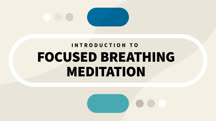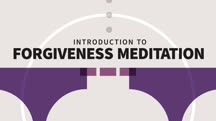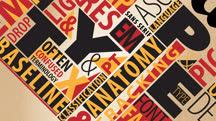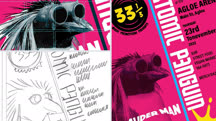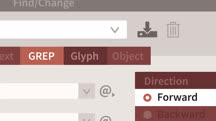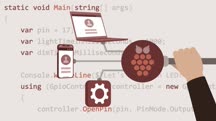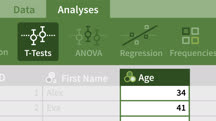Course catalog
Categories
Showing 4,181-4,200 of 9,135 items.
Introduction to Digital Twins
Discover the value of digital twins in a variety of industries. Learn how this important technology is revolutionizing how organizations design, build, and maintain solutions.
Introduction to Disciplined Agile (221065)
In this course, instructor Joshua Barnes gives you a foundational understanding of the strategies, principles, and practices that go into Disciplined Agile. Disciplined Agile is composed of four main views: mindset, flow, practices, and people. The mindset view is composed of the ideas of principles, promises, and guidelines. The flow view focuses on lifecycles and workflows. Joshua steps you through each of the different team life cycles that are available in the flow view, then covers how to implement a change strategy. The practices view helps you to evaluate the advantages and disadvantages of any given practice. Joshua goes over the goals, decision points, options, and guidance that you can access through the practices view. The final view of Disciplined Agile is the people view, which helps you to empower the individuals on your team. Joshua concludes by explaining the importance of focusing on a continuous cycle of constant improvement.
Note: This course was created by Joshua Barnes. We are pleased to host this training in our library.
Note: This course was created by Joshua Barnes. We are pleased to host this training in our library.
Introduction to Documentary Video Storytelling
Learn about the history and importance of documentary filmmaking. Explore the narrative building blocks of documentaries, with examples of nonfiction filmmaking over 120 years.
Introduction to Employee Relations (UK)
Discover how to effectively manage employee relations in the world of 21st-century work.
Introduction to File Formats for 3D and Visualization (225740)
3D and visualization projects use a wide variety of different file types. So how do you know which file formats to use, and when? In this course 3D animation expert George Maestri walks through the pros and cons of each of the major 2D and 3D formats. George starts off with some 2D formats that are used for bitmaps and textures, and then moves on to 3D formats, detailing what types of files can store what types of data. He also covers how the different file types can work to interchange, save, and transfer data between multiple software packages. If you’re looking to add another dimension to your understanding of 2D and 3D file formats, join George in this course.
Introduction to Focused Breathing Meditation
This audio-only course teaches basic sitting practice, the essential starting point for nurturing nonjudgmental spaciousness.
Introduction to Forgiveness Meditation (230772)
It’s a simple fact of life that at some point, we’ve been harmed or betrayed, and at other times we have betrayed others or ourselves. But one of the greatest gifts of a spiritual life is that of forgiveness. In this audio-only course, mediation expert Jack Kornfield shows how forgiveness can transform your life and release you from the sorrows of the past. Jack’s guided meditation will help you begin the process of forgiveness, helping you process feelings of grief, rage, fear, and confusion. As Jack highlights, once you let yourself feel the pain you carry, forgiveness comes as a sense of relief and frees you from the past, allowing you to move on with your life.
Introduction to Graphic Design
Learn the concepts and software skills that you need to become a graphic designer. Learn about image editing, logo design, and layout in Photoshop, Illustrator, and InDesign.
Introduction to Graphic Design - Dimension (230959)
Graphic design adds color and interest to everything from billboards to textbooks. In order for graphic designers to apply their creativity to such a broad array of projects, they must master a range of tools and skills. In this installment of the Introduction to Graphic Design series, instructor Tony Harmer helps you add one such tool—Dimension, the 3D rendering and design software from Adobe—to your graphic design tool kit. Explore the difference between the 2D space of documents from most graphics programs and the 3D space used in Adobe Dimension. Learn how to create a document, add a model to a scene in an Adobe Dimension environment, and place object primitives, a background, text, and lights in your project. Along the way, learn how to apply your new skills in a real-world workflow as you step through a sample project.
Introduction to Graphic Design: Concepts (209539)
Graphic design is a complex art that involves many different skills and tools. In this course, instructor Tony Harmer covers the core skills that every designer needs to know and shows you how to integrate all these skills in your workflow. Tony discusses the four stages of the creative process. He introduces you to the jargon used in typography, as well as type classifications and the basic measurements used when working with type. Tony goes over the how to pick pleasing color combinations, how to use color as information, and how to accommodate viewers with color vision deficiency (CVD). He explains the impact you can make with images and illustrations in graphic design projects, and he walks you through how to create a graphic design layout. Tony concludes with some creativity tips to keep your ideas fresh.
Introduction to Graphic Design: Illustrator
Learn how to set up your project in Illustrator; use elements like fonts, icons, and color palettes; and finalize and export your project.
Introduction to Graphic Design: InDesign (209811)
Graphic design is a complex art that touches everything from digital marketing campaigns to the packaging of your favorite snacks. The Introduction to Graphic Design series covers the concepts and software that every designer needs to know and explains how they fit into a typical graphic design workflow. In this installment of the series, instructor Tony Harmer delves into Adobe InDesign, providing an overview of the InDesign skills that every graphic designer should have in their tool kit. To lend these concepts a real-world context, Tony shows how to apply these skills to create a project: a brochure for a fictitious vehicle. Learn all about working with layers, creating guide layouts to aid the creation of a balanced design, importing data, styling tables, and much more.
Introduction to Graphic Design: Photoshop (210814)
Design is a complex art that involves many different skills and tools. In this course, instructor Tony Harmer covers some core skills in Photoshop that every designer needs to know. Tony shows you how to crop an image, make a rule-of-thirds grid, and removing a background. He goes over color adjusting an image and creating layer comps to display only a selected set of layers. He explains all the steps to build a layout, including feature images, buttons, text, and more. After stepping through some finishing touches, Tony shows you how to organize your Photoshop file and color check to assess your file’s suitability for people with color vision deficiency (CVD). He concludes by explaining how to complete the file, export the variations, and package the file for delivery or archiving.
Introduction to Graphic Design: XD (229429)
Graphic designers must master many different skills and tools. In this installment of the Introduction to Graphic Design series, instructor Tony Harmer covers the essential Adobe XD skills you need to become a graphic designer. To help you grasp how to apply this powerful UI/UX design tool in real-world situations, he demonstrates each concept in the context of a sample project. Tony begins by explaining how to set up your project, including how to choose colors and fonts and test colors for accessibility. He then shows how to build your design in Adobe XD, including how to create a launch page and login screen, add UI components, and use Repeat Grid to create arrays with consistent spacing—both horizontally and vertically. To wrap up, he goes over how to write and test a prototype in Adobe XD to simulate interactions and experiences in an app.
Introduction to GREP in InDesign
Speed up everyday formatting tasks with GREP in Adobe InDesign. Learn the basics behind the code, using Find/Change with GREP, how GREP can apply formatting to text, and more.
Introduction to IoT with .NET Core (229786)
Does the Internet of Things (IoT) work with .NET? This course provides an introduction to writing apps in C# using .NET and then running those apps on an IoT device. Join instructor Sweeky Satpathy as she walks through understanding IoT devices and shows how to control them with .NET, in this case using a Raspberry Pi microcontroller and Docker to run .NET applications. After highlighting the software and hardware requirements, she guides you through writing a simple application to trigger a blinking LED on the hardware. Sweeky ends the course with an advanced tutorial, showing how to add hardware and write software to create a temperature change notification on the Raspberry Pi.
This course was created by Microsoft.NET. We are pleased to host this training in our library.
This course was created by Microsoft.NET. We are pleased to host this training in our library.
Introduction to ISO Global BIM Standards
Learn the framework you need to work with BIM around the world. Explore the global BIM standards defined by the International Organization for Standardization (ISO).
Introduction to IT Architecture (221337)
In this course, instructor Ed Liberman explains the fundamentals of IT architecture, examines topics within an IT architecture, and addresses challenges organizations face when using IT to meet their business goals. IT architecture is the overall design of the computer systems in your business. Ed shows you what an enterprise is in the context of IT architecture, and how to define an enterprise network for your organization. He goes over common tasks most IT architects perform, as well as specialized roles, and some of the tools that IT architects need for their jobs. Ed teaches how you can use consolidation to reduce unwanted complexities. He covers information security and how to manage risks. Ed steps through creating an enterprise solution and moving to an advanced enterprise, then shows you how to protect your enterprise and get back on track when disasters happen.
Introduction to IT Automation (219484)
Historically, managing an IT Infrastructure was a manual process. Administrators would manually check applications and services, hoping they were still working. In this new modern IT world, automating is the best way of managing on-premises, cloud, and hybrid environments. In this course, Microsoft MVP and MCT Liam Cleary walks you through what IT automation is and how you can put it to work for your organization. After defining IT automation and sharing some advantages, disadvantages, and cost reductions that it presents, Liam explains several approaches to automation. It’s not one size fits all, as different organizations will have different needs. He goes over automation tools for Windows, Linux, and the Cloud, then goes in-depth on how you can use scripts to assist in IT automation.
Introduction to jamovi
Learn how to do fast and friendly data analysis with jamovi. See how to use this open-source application to analyze data, reproduce analyses, and collaborate with colleagues.





